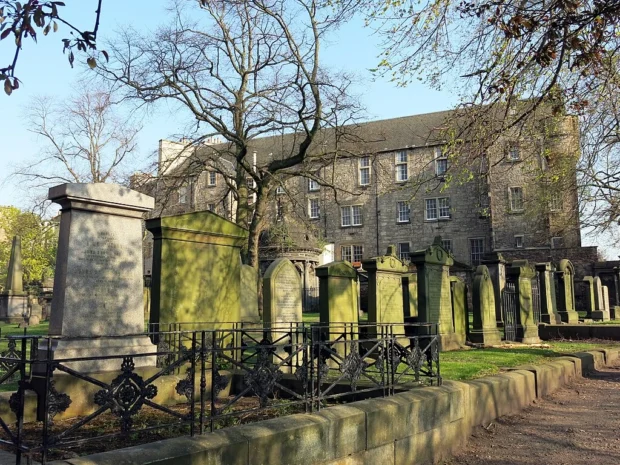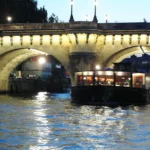Edinburgh, the Scottish capital, is a city that mixes old stone towers with lively city life. Its streets tell stories, from ancient castles to busy markets. Visitors often come for the famous castle or festivals, but the true charm of Edinburgh lies in its daily life and local culture. Whether you walk the cobbled paths or sit in a quiet café, Edinburgh offers moments to remember. In this guide, I share what I saw, tasted, and learned after spending many weeks in this city.
Table of Contents

Walking Among Edinburgh’s Historic Landmarks
The first thing you notice in Edinburgh is how the old and new stand side by side. The city’s heart is the Castle Rock, where Edinburgh Castle stands high on a rocky hill. Walking up to the castle takes some effort, but the views over the city and sea are worth every step. Inside, the Crown Jewels and the Stone of Destiny tell stories of kings and queens. I found it fascinating that this castle has witnessed many battles and celebrations through centuries.
For travelers who enjoy medieval city charm, Tallinn’s Old Town offers a glimpse into history with its well-preserved streets and local culture.
After enjoying Edinburgh’s charm, you might appreciate a stroll through Dublin’s lively streets and history, which also blend old stories with local culture.

Just a short walk from the castle is the Royal Mile, a famous long street full of shops, cafés, and street performers. Each building here has its own tale. I loved stopping by the small closes (narrow alleyways) off the main road. One close, Mary King’s Close, hides tales of plague and mystery beneath the city. These narrow paths provide a glimpse into how life was centuries ago.

Quiet Corners and Hidden Places to Visit
While the big sights are impressive, Edinburgh also has quiet, less-known spots. I found Dean Village-a peaceful area near the water with old mills and green parks. It feels like a village inside the city, perfect for a calm walk away from tourists. Another favorite was the Meadows, a large green space where locals meet for picnics, sports, and festivals in good weather.

For those who enjoy city views, Calton Hill is a must. It’s smaller than Arthur’s Seat but offers beautiful panoramas of the cityscape. The hill is dotted with monuments such as the National Monument and the Nelson Monument. Sitting on the grass there with the cool breeze, I could see both the old town’s rooftops and the newer parts of Edinburgh stretching out.

Tasting Edinburgh’s Food and Markets
Scottish food is rich and comforting. In Edinburgh, I wandered through the Grassmarket area, where old pubs serve dishes like haggis, a savory mix of meat and spices. If haggis feels too brave, try Cullen Skink, a creamy fish soup that warms the soul. The area is lively, filled with locals and visitors enjoying hearty meals and friendly chats.

Markets are another highlight. The Edinburgh Farmers’ Market, held on Saturdays near Castle Terrace, offers fresh vegetables, cheeses, and artisanal bread. I talked with a cheese maker who told me about their aging process and the care behind each block. Sampling fresh berries and smoked salmon from the stalls was a delight for the taste buds.

Getting Around: Tips for Transport in Edinburgh
When arriving at Edinburgh Airport, the easiest way to enter the city center is by using the tram or the bus. The tram connects the airport with the main railway station and the center smoothly. Buses also run frequently and cover almost all city areas. For a full day in the city, a day ticket for buses and trams offers good value and ease of travel.

Walking is often the best way to feel the city. Many streets in the old town are pedestrian-only or very narrow for cars. The city also has bike rentals, which can be a fun way to see parks and neighborhoods beyond the center.
If you appreciate old European cities like Edinburgh, the lively spirit of Warsaw’s landmarks and culture offers a different but equally rich urban charm.

Living Like a Local: Where to Stay in Edinburgh
Edinburgh has many cozy neighborhoods perfect for visitors. Staying near the New Town offers elegant Georgian buildings and easy access to shops and restaurants. This area feels calm yet central. For a more artistic vibe, Leith is a district by the water with a growing food scene and local galleries. Here you can enjoy fresh seafood and see how the city’s creative spirit lives outside the tourist core.

Another option is Stockbridge, a place full of small boutiques, cafés, and a Sunday market. It feels like a small village and is perfect to enjoy a slower pace. No matter where you stay, you will find friendly people ready to share a story or recommend their favorite spot.
Understanding Edinburgh’s Culture and Customs
Edinburgh is proud of its traditions but also open and welcoming. When you meet locals, a polite “hello” or “good morning” goes a long way. Scots are known for their friendliness and humor, so don’t hesitate to ask questions or join conversations.
During festivals like the Fringe or Hogmanay, the city fills with music and performances. It’s best to book tickets early, but walking through the event areas is free and full of energy. Remember to respect quiet times in residential areas, especially late at night.
A small but useful tip: when in pubs, it is common to order drinks at the bar, not from a server. Also, tipping around 10% is appreciated but not always expected.
Stories and Surprises: What Makes Edinburgh Special
One evening, I stumbled on a storytelling event in a small café near the Royal Mile. The teller shared old Scottish myths-like the legend of the Blue Men of the Minch, sea creatures said to sing sailors into storms. These tales add a magical layer to the city’s streets and buildings.
Another surprise was learning about Edinburgh’s underground vaults. These dark chambers beneath the city were once used for storage but later housed people during hard times. Walking into these vaults, I felt a chill, imagining the lives hidden below the busy streets.
Every corner has a story here. Even the city’s architecture tells of different times: medieval walls, Georgian elegance, and modern glass buildings blend in an unexpected harmony. For photography lovers, Edinburgh offers endless chances to capture light and shadow playing on old stones and colorful doors.
For more detailed information about Edinburgh Castle and tickets, visit the official Edinburgh Castle website.
In the end, Edinburgh is more than a list of sights. It is a city to feel with all senses-through its food, stories, and friendly faces. Whether you come for a few days or longer, the city invites you to slow down, look closely, and enjoy its many layers.

Lover of cities, local cafés, and historic streets, exploring urban life with attention to architecture and culinary delights.
- EdinburghFromCastle by The original uploader was AlanFord at English Wikipedia. on Wikimedia Commons – cc by 2.5
- Edinburgh Castle, Edinburgh – geograph.org.uk – 502440 by Dave Hitchborne on Wikimedia Commons – cc by-sa 2.0
- Jacobites in the Royal Mile – geograph.org.uk – 1414215 by kim traynor on Wikimedia Commons – cc by-sa 2.0
- City of Edinburgh – Holyrood Palace – 20240528235057 by Gillfoto on Wikimedia Commons – cc by-sa 4.0
- Arthur's Seat and Edinburgh Old Town – geograph.org.uk – 1905895 by David Dixon on Wikimedia Commons – cc by-sa 2.0
- National Museum of Scotland – geograph.org.uk – 5737138 by M J Richardson on Wikimedia Commons – cc by-sa 2.0
- Edinburgh – Scottish National Gallery – 20140421192506 by Enric on Wikimedia Commons – cc by-sa 4.0
- Calton Hill, Edinburgh – geograph.org.uk – 896915 by Bob Jones on Wikimedia Commons – cc by-sa 2.0
- Edinburgh, St Giles – geograph.org.uk – 7279027 by Kay Williams on Wikimedia Commons – cc by-sa 2.0
- Edinburgh – Greyfriars Kirkyard – 20140421182913 by Enric on Wikimedia Commons – cc by-sa 4.0
- East Princes Street Gardens, Edinburgh – geograph.org.uk – 4608179 by Mike Pennington on Wikimedia Commons – cc by-sa 2.0
